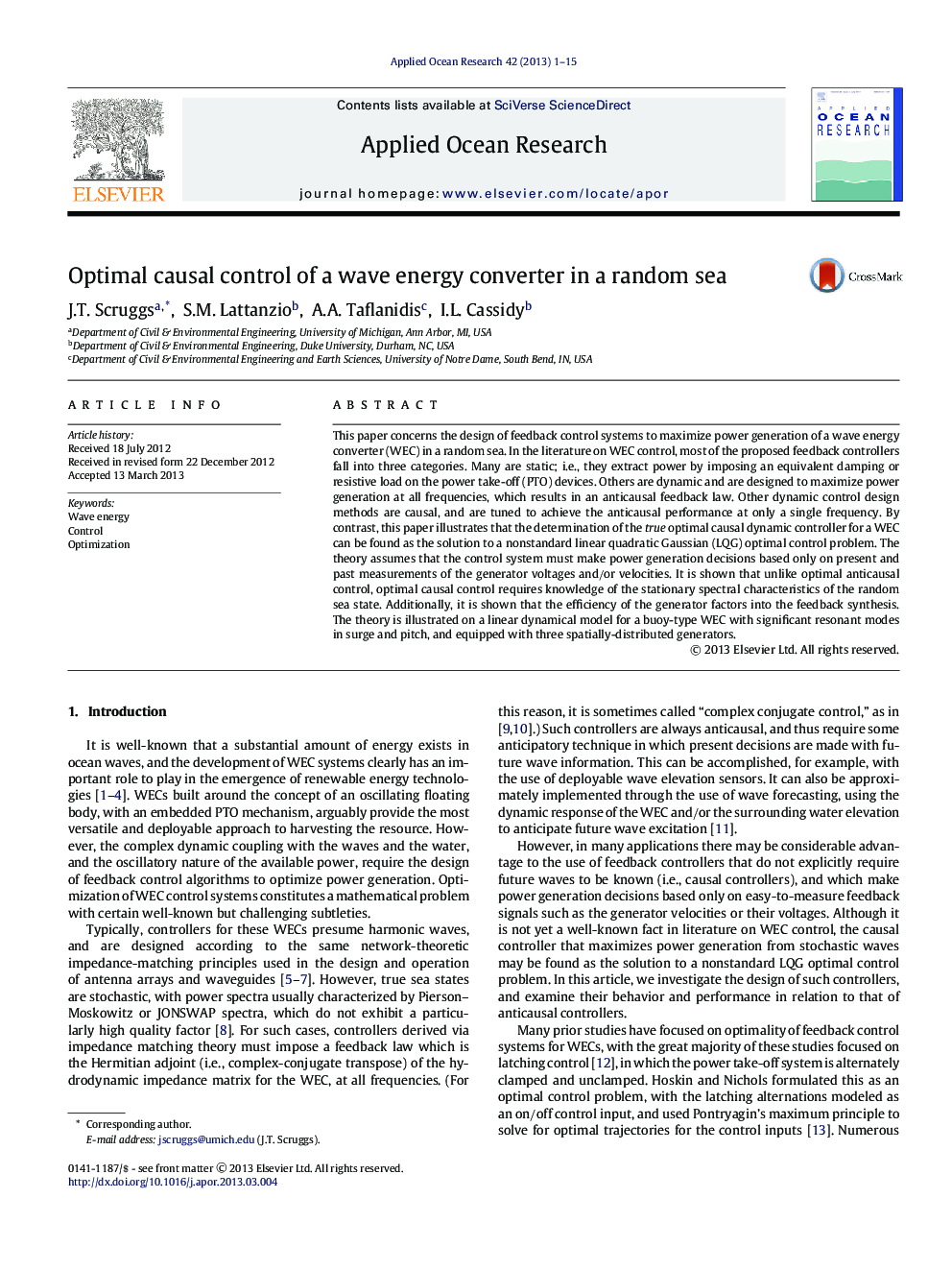| Article ID | Journal | Published Year | Pages | File Type |
|---|---|---|---|---|
| 1720016 | Applied Ocean Research | 2013 | 15 Pages |
•Optimal causal dynamic controllers for wave energy converters are solved using LQG optimal control theory.•The causal control theory is placed in the context of anticausal and static controllers.•The theory is demonstrated on a three-generator, 6-degree-of-freedom buoy-type converter.•The behavior of causal, anticausal, and static controllers is contrasted via power generation spectra.•A sensitivity analysis is conducted for performance degradation of optimal causal control, due to errors in the sea state parameters.
This paper concerns the design of feedback control systems to maximize power generation of a wave energy converter (WEC) in a random sea. In the literature on WEC control, most of the proposed feedback controllers fall into three categories. Many are static; i.e., they extract power by imposing an equivalent damping or resistive load on the power take-off (PTO) devices. Others are dynamic and are designed to maximize power generation at all frequencies, which results in an anticausal feedback law. Other dynamic control design methods are causal, and are tuned to achieve the anticausal performance at only a single frequency. By contrast, this paper illustrates that the determination of the true optimal causal dynamic controller for a WEC can be found as the solution to a nonstandard linear quadratic Gaussian (LQG) optimal control problem. The theory assumes that the control system must make power generation decisions based only on present and past measurements of the generator voltages and/or velocities. It is shown that unlike optimal anticausal control, optimal causal control requires knowledge of the stationary spectral characteristics of the random sea state. Additionally, it is shown that the efficiency of the generator factors into the feedback synthesis. The theory is illustrated on a linear dynamical model for a buoy-type WEC with significant resonant modes in surge and pitch, and equipped with three spatially-distributed generators.
